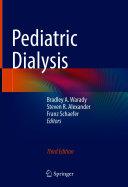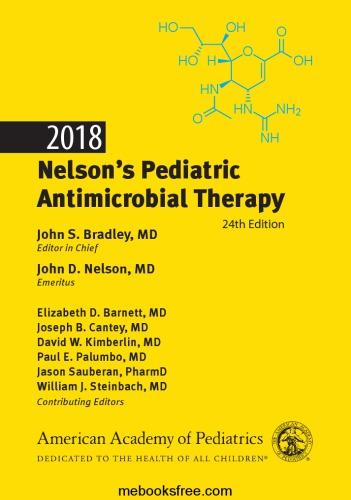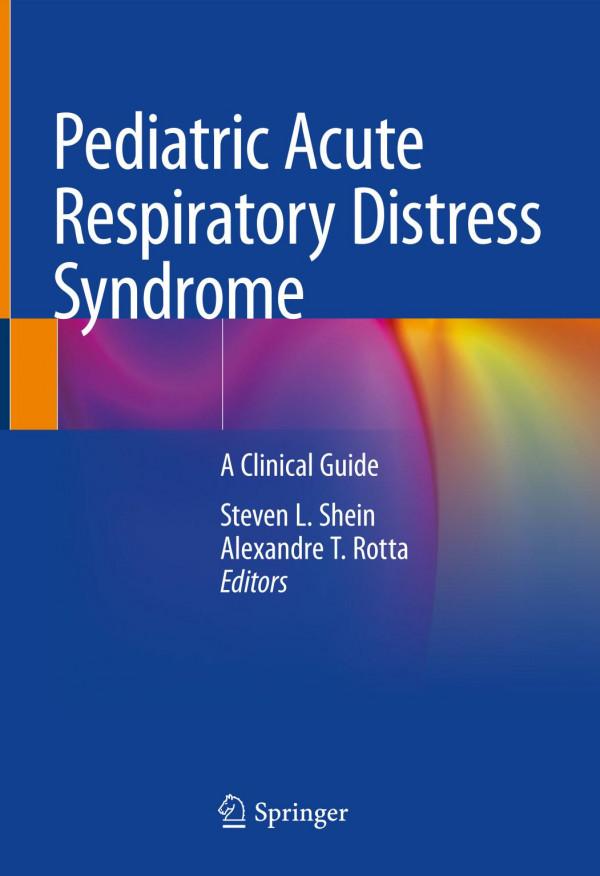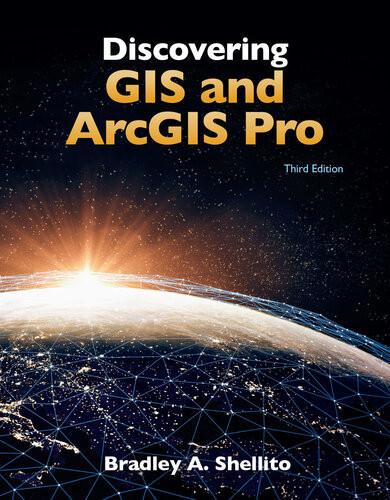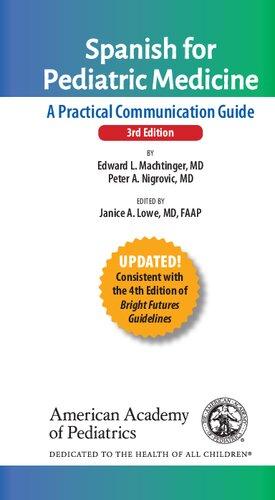Acknowledgments
The editors would like to thank Michael Griffn from Springer, who graciously kept this project as a personal priority and whose project management skills and patience contributed greatly to the successful completion of this book.
ix
Antoine E. Khoury
xi Part I Essential Primers 1 Notes on the History of Dialysis Therapy in Children . . . . . . . . . 3 Steven R. Alexander and Pierre Cochat 2 The Biology of Dialysis . . . . . . . . . . . . . . . . . . . . . . . . . . . . . . . . . . 17
R. Clark and
Ronco 3 The Demographics of Dialysis in Children 35 Jeffrey J. Fadrowski and Lesley Rees 4 Chronic Dialysis in Developing Countries 47 Hui-Kim Yap and Francisco Cano 5 Organization and Management of a Pediatric Dialysis Program . . . . . . . . . . . . . . . . . . . . . . . . . . . . . . . . . . . . . . . 55 Amy Nau 6 Role of the Advanced Practice Provider in a Pediatric Dialysis Program . . . . . . . . . . . . . . . . . . . . . . . . . . . . . . . . . . . . . . . . . . . . . . 69 Jessica J. Geer and Kathleen F. Mallett 7 Quality Improvement Strategies and Outcomes in Pediatric Dialysis 81 Helen Currier, Pamela S. Heise, and Leyat Tal 8 Antibiotic Stewardship in the Pediatric Dialysis Unit 101
G.
and
Part II Considerations Around the Initiation of Dialysis 9 The Decision to Initiate Dialysis in Children and Adolescents 115
William
Claudio
Jason
Newland
Alicia M. Neu
10 Urological Issues in Pediatric Dialysis 131
Rima S. Zahr, Larry A. Greenbaum, and Franz Schaefer
Contents
Joshua D. Chamberlin, Angus Alexander, Armando J. Lorenzo, and
Sevcan A. Bakkaloğlu and Christine B. Sethna
Claus Peter Schmitt and Daljit K. Hothi
Franz Schaefer and Jordan M. Symons 21 Haemodiafiltration: Principles, Technique, and Advantages over Conventional Haemodialysis
Rukshana Shroff, Evgenia Preka, and Bruno Ranchin 22 Maintenance Hemodialysis During Infancy
Sarah J. Swartz and Fabio Paglialonga 23 Home Haemodialysis in Children
Daljit K. Hothi and Claus Peter Schmitt
24 Infectious Complications of Hemodialysis in Children 401
Ali Mirza Onder and Michael J. G. Somers
25 Non-infectious Complications of Hemodialysis in Children
Dagmara Borzych-Dużałka and Elizabeth Harvey
xii 11 Preservation of Residual Renal Function in Children Reaching End-Stage Renal Disease 157
Schaefer Part III Peritoneal Dialysis 12 Peritoneal Access in Children Receiving Dialysis 175
A. Warady and Walter S. Andrews 13 Technical Aspects and Prescription of Peritoneal Dialysis in Children . . . . . . . . . . . . . . . . . . . . . . . . . . . . . . . . . . . . . 193
14 Peritoneal Dialysis Solutions . . . . . . . . . . . . . . . . . . . . . . . . . . . . . 229 Elizabeth Harvey 15 Peritoneal Dialysis During Infancy . . . . . . . . . . . . . . . . . . . . . . . . 249 Enrico
and
Zaritsky 16 Infectious Complications of Peritoneal Dialysis in Children 265
Il-Soo Ha and Franz
Bradley
Enrico Eugenio Verrina and Lyndsay A. Harshman
Vidal
Joshua
Franz Schaefer 17 Noninfectious Complications of Peritoneal Dialysis in Children . . . . . . . . . . . . . . . . . . . . . . . . . . . . . . . . . . . . . 291
Alicia M. Neu, Bradley A. Warady, and
18 Remote Patient Monitoring in Peritoneal Dialysis. . . . . . . . . . . . 315
Part IV Hemodialysis 19 Hemodialysis Vascular Access in Children . . . . . . . . . . . . . . . . . . 325
Boehm,
20 Technical Aspects of Hemodialysis in Children . . . . . . . . . . . . . .
Michael
Deepa H. Chand, and Mary L. Brandt
341
. . . . . . . . . . . . . . .
359
379
389
. . . . . . . . . . . . . . . . . . . . . . . . . . . . . . . . . . . . . . . . . . . . 437
Contents
Part V Management of Secondary Complications of Chronic Dialysis
26 Nutritional Assessment and Prescription for Children Receiving Maintenance Dialysis 463
Christina L. Nelms, Nonnie Polderman, and Rosanne J. Woloschuk
27 Controlled Enteral and Parenteral Nutrition in Children on Dialysis .
Bethany J. Foster and Anne Tsampalieros
28 Growth and Pubertal Development in Children and Adolescents Receiving Chronic Dialysis 509
Dieter Haffner and John D. Mahan
29 The Management of CKD-MBD in Pediatric Dialysis Patients .
Justine Bacchetta and Isidro B. Salusky
30 The Cardiovascular Status of Pediatric Dialysis Patients . .
Rukshana Shroff and Mark M. Mitsnefes
31 Management of Hypertension in Pediatric Dialysis Patients . . . 589
Elke Wühl and Joseph T. Flynn
32 Management of Anemia in Children Receiving Chronic Dialysis 609
Meredith A. Atkinson and Bradley A. Warady
33 Immune Function and Immunizations in Dialyzed Children 633
Annabelle N. Chua and Sevcan A. Bakkaloğlu
34 Neurocognitive Functioning in Pediatric Dialysis 649
Stephen R. Hooper and Erum Aftab Hartung
35 Psychosocial Adjustment and Adherence to Prescribed Medical Care of Children and Adolescents on Dialysis . .
Kristin Loiselle Rich, Rebecca J. Johnson, and Melissa K. Cousino
Part VI Drugs and Dialysis
. 665
36 Drug Administration and Pharmacogenomics in Children Receiving Acute or Chronic Renal Replacement Therapy 683
Bridget L. Blowey, J. Steven Leeder, and Douglas L. Blowey
37 Role of Radiological Assessment and Intervention in Pediatric Dialysis . .
Vikas R. Dharnidharka and Douglas C. Rivard
709
38 Extracorporeal Therapy for Drug Overdose and Poisoning . . . . 725
Vimal Chadha
xiii
. . . . . . . . . . . . . . . . . . . . . . . . . . . . . . . . . . . . . . . . . . . . . . 489
. . . . . . . . . . . . . . . . . . . . . . . . . . . . . . . . . . . . . . . . . . . . . 541
.
. .
. .
559
. . .
.
.
. . . . . . . . . . . . . . . . . . . . . . . . . . . . . . . . . . . . .
Contents
Part VII Outcome of Chronic Dialysis
39 Long-Term Outcome of Chronic Dialysis in Children . . . . . . . . 745
Masataka Honda, Chikako Terano, Tomohiro Inoguchi, Kaori Kikunaga, Ryoko Harada, and Jaap W. Groothoff
40 Health-Related Quality of Life of Children and Adolescents on Dialysis .
Rebecca J. Johnson and Susan L. Furth
785
41 Transition and Transfer to Adult Care for Adolescents and Young Adults with Advanced Chronic Kidney Disease 793
Lorraine E. Bell and Dirk Bethe
42 Ethical Decision-Making in Pediatric Dialysis 811
Aaron Wightman, Bruno Ranchin, and Aviva M. Goldberg
Part VIII Special Indications, Techniques and Applications
43 Diagnosis and Treatment of Acute Kidney Injury in Children and Adolescents 827
Emma Heydari Ulrich, David Selewski, and Michael Zappitelli
44 Neonatal Acute Kidney Injury .
Cherry Mammen and David Askenazi
861
45 Acute Kidney Injury in Less Well-Resourced Countries . . . . . . 883
Mignon I. McCulloch and Arvind Bagga
46 Extracorporeal Liver Support Therapies for Children . . . . . . . . 895
Betti Schaefer, Claus Peter Schmitt, and Rajit K. Basu
47 Dialytic Therapy of Inborn Errors of Metabolism in Case of Acute Decompensation 909
Lucile Barcat, Patricia Monnier, Franz Schaefer, and Philippe Jouvet
48 Therapeutic Apheresis in Children
Christina Taylan and Scott M. Sutherland
921
49 Evaluating and Preparing the Pediatric Dialysis Patient for Kidney Transplantation 945
Sandra Amaral and Lars Pape
50 The Spectrum of Patient and Caregiver Experiences 957
Allison Tong, Ansara H. Piebenga, and Bradley A. Warady Index 975
xiv
. . . . . . . . . . . . . . . . . . . . . . . . . . . . . .
.
. .
. . . . . . . . . . . . . . . . . . . . . . . . .
.
.
. . . . . . . . . . . . . . . . . . . . . .
.
.
Contents
Contributors
Angus Alexander, MBBCh, FCS, FRACS Department of Paediatric Surgery, The Children’s Hospital at Westmead, Sydney, NSW, Australia
Steven R. Alexander, MD Department of Pediatrics, Lucile Packard Children’s Hospital at Stanford, Stanford, CA, USA
Sandra Amaral, MD, MHS The Children’s Hospital of Philadelphia, Pediatrics, Division of Nephrology, Philadelphia, PA, USA
Walter S. Andrews, MD Department of General Surgery, Children’s Mercy Kansas City, Kansas City, MO, USA
David Askenazi, MD, MSPH, FASN University of Alabama at Birmingham, Pediatric and Infant Center for Acute Nephrology, Children’s of Alabama, Birmingham, AL, USA
Meredith A. Atkinson, MD, MHS Department of Pediatrics, Johns Hopkins University School of Medicine, Baltimore, MD, USA
Justine Bacchetta, MD, PhD Pediatric Nephrology, Rheumatology and Dermatology Unit, Reference Center for Rare Renal Diseases and Rare Diseases of Calcium and Phosphate Metabolism, Hôpital Femme Mère Enfant, Bron, France
Arvind Bagga, MD, FAMS All India Institute of Medical Sciences, Department of Pediatrics, New Delhi, India
Sevcan A. Bakkaloğlu, MD Department of Pediatric Nephrology, Gazi University School of Medicine, Ankara, Turkey
Lucile Barcat, MD Sainte-Justine Hospital, Department of Pediatrics, Montreal, QC, Canada
Rajit K. Basu, MD, MS Children’s Healthcare of Atlanta, Emory University, Department of Pediatrics, Critical Care Medicine, Atlanta, GA, USA
Lorraine E. Bell, MDCM, FRCPC Department of Pediatrics, Division of Nephrology, McGill University Health Centre, Montreal Children’s Hospital, Montreal, Québec, Canada
Dirk Bethe, Dipl.-Psych Pediatric Nephrology Division, University Hospital Heidelberg, Heidelberg, Germany
xv
Bridget L. Blowey, PharmD Department of Pharmacy, Children’s Hospital of Philadelphia, Philadelphia, PA, USA
Douglas L. Blowey, MD Department of Pediatrics, CMH Integrated Care Solutions, Children’s Mercy, Kansas City, MO, USA
Michael Boehm, MD Division of Pediatric Nephrology and Gastroenterology, Department of Pediatrics and Adolescent Medicine, Comprehensive Center for Pediatrics, Medical University of Vienna, Vienna, Austria
Dagmara Borzych-Dużałka, MD, PhD Division of Pediatric Nephrology, Department of Pediatrics, Johns Hopkins University School of Medicine, Baltimore, MD, USA
Mary L. Brandt, MD Pediatric Surgery Department, Tulane University School of Medicine and Children’s Hospital of New Orleans, New Orleans, LA, USA
Francisco Cano, MD Luis Calvo Mackenna Children’s Hospital, University of Chile, Pediatric Nephrology, Santiago, Chile
Vimal Chadha, MD Department of Pediatrics, University of MissouriKansas City School of Medicine, Acute Kidney Injury Program, Children’s Mercy Kansas City, Kansas City, MO, USA
Joshua D. Chamberlin, MD Department of Urology, Loma Linda University, Loma Linda, CA, USA
Department of Urology, Loma Linda University Children’s Hospital, Loma Linda, CA, USA
Deepa H. Chand, MD, MHSA Department of Pediatrics, Washington University School of Medicine, St. Louis, MO, USA
Annabelle N. Chua, MD Department of Pediatrics, Duke Children’s Hospital, Durham, NC, USA
William R. Clark, MD Department of Chemical Engineering, Purdue University, West Lafayette, IN, USA
Pierre Cochat, MD, PhD Service de néphrologie rhumatologie dermatologie pédiatriques, Centre de référence des maladies rénales rares, Hospices Civils de Lyon & Université Claude-Bernard Lyon 1, Lyon, France
Melissa K. Cousino, PhD Department of Pediatrics, C.S. Mott Children’s Hospital, Ann Arbor, MI, USA
Helen Currier, MA, BSN, CENP, CNN Department of Medical Affairs, Medical Science Liaison, Rockwell Medical, Wixom, MI, USA
Vikas R. Dharnidharka, MD, MPH Division of Pediatric Nephrology, Hypertension and Pheresis, Department of Pediatrics, Washington University School of Medicine and St. Louis Children’s Hospital, St. Louis, MO, USA
Jeffrey J. Fadrowski, MD, MHS Division of Pediatric Nephrology, Department of Pediatrics, Johns Hopkins University School of Medicine, Baltimore, MD, USA
xvi
Contributors
Joseph T. Flynn, MD, MS University of Washington School of Medicine, Division of Nephrology, Seattle Children’s Hospital, Seattle, WA, USA
Bethany J. Foster, MD, MSCE Department of Pediatrics, Montreal Children’s Hospital of the McGill University Health Centre, Montreal, QC, Canada
Susan L. Furth, MD, PhD Department of Pediatrics, Children’s Hospital of Philadelphia, Philadelphia, PA, USA
Jessica J. Geer, MSN, C-PNP, CNN-NP Department of Renal Services, Texas Children’s Hospital, Houston, TX, USA
Aviva M. Goldberg, MD, MA, FRCPC Department of Pediatrics and Child Health, Max Rady College of Medicine, Section of Pediatric Nephrology, Winnipeg, MB, Canada
Larry A. Greenbaum, MD, PhD Emory University and Children’s Healthcare of Atlanta, Division of Pediatric Nephrology, Atlanta, GA, USA
Jaap W. Groothoff, MD, PhD Pediatric Nephrology Department, Amsterdam UMC/Emma Children’s Hospital, Amsterdam, Netherlands
Il-Soo Ha, MD, PhD Department of Pediatrics, Seoul National University Children’s Hospital, Seoul, Republic of Korea
Dieter Haffner, MD Pediatric Kidney, Liver and Metabolic Diseases, Hannover Medical School, Hannover, Lower Saxony, Germany
Ryoko Harada, MD Department of Nephrology, Tokyo Metropolitan Children’s Medical Center, Tokyo, Japan
Lyndsay A. Harshman, MD, MS University of Iowa Stead Family Children’s Hospital, Pediatric Nephrology, Dialysis, and Transplantation, Iowa City, IA, USA
Erum Aftab Hartung, MD, MTR Division of Nephrology, Children’s Hospital of Philadelphia, Philadelphia, PA, USA
Elizabeth Harvey, MD, FRCPC Hospital for Sick Children, Department of Pediatrics, University of Toronto, Toronto, ON, Canada
Pamela S. Heise, MSN, BBA, RN, CPN, CNN Renal & Pheresis Services, Assistant Director of Clinical Practice, Texas Children’s Hospital, Houston, TX, USA
Masataka Honda, MD, PhD Department of Clinical Research Support Center, Metropolitan Children’s Medical Center, Tokyo, Japan
Stephen R. Hooper, PhD Department of Allied Health Sciences, School of Medicine, University of North Carolina-Chapel Hill, Chapel Hill, NC, USA
Daljit K. Hothi, MBBS, MRCPCH, MD Department of Nephrology, Great Ormond Street Hospital for Children Foundation Trust, London, UK
xvii
Contributors
Tomohiro Inoguchi, MD Department of Nephrology, Tokyo Metropolitan Children’s Medical Center, Tokyo, Japan
Rebecca J. Johnson, PhD, ABPP Division of Developmental and Behavioral Health, University of Missouri-Kansas City School of Medicine, Children’s Mercy Kansas City, Kansas City, MO, USA
Philippe Jouvet, MD, PhD Sainte-Justine Hospital, Department of Pediatrics, Montreal, QC, Canada
Antoine E. Khoury, MD, FRCSC, FAAP Department of Urology, University of California, Irvine, Orange, CA, USA
Department of Urology, Children’s Hospital of Orange County, Orange, CA, USA
Kaori Kikunaga, MD Department of Nephrology, Tokyo Metropolitan Children’s Medical Center, Tokyo, Japan
J. Steven Leeder, PharmD, PhD Department of Pediatrics, Children’s Mercy Research Institute, Children’s Mercy Hospital, Kansas City, MO, USA
Armando J. Lorenzo, MD, MSc Department of Surgery, Hospital for Sick Children, Toronto, ON, Canada
John D. Mahan, MD Department of Pediatric Nephrology, Nationwide Children’s Hospital, The Ohio State University College of Medicine, Columbus, OH, USA
Kathleen F. Mallett, MSN, FNP-C, CNN-NP Division of Nephrology, Children’s Mercy Kansas City, Kansas City, MO, USA
Cherry Mammen, MD, MHSc Department of Pediatrics, Division of Nephrology, BC Children’s Hospital, Vancouver, BC, Canada
Mignon I. McCulloch, FCP Paeds, FRCPCH Red Cross War Memorial Children’s Hospital, Paediatric Nephrology and Solid Organ Transplant, Rondebosch, Cape Town, South Africa
Mark M. Mitsnefes, MD, MS Division of Nephrology and Hypertension, Cincinnati Children’s Hospital Medical Center, Cincinnati, OH, USA
Patricia Monnier, MD, PhD Department of Obstetrics Gynecology, Royal Victoria Hospital, Montreal, QC, Canada
Amy Nau, MBA, MSN, RN, CNN Children’s Mercy Hospital, Division of Nephrology, Kansas City, MO, USA
Christina L. Nelms, MS, RD, LMNT PedsFeeds, University of Nebraska, Kearney, NE, USA
Alicia M. Neu, MD Division of Pediatric Nephrology, Department of Pediatrics, Pediatric Dialysis and Kidney Transplantation, The Johns Hopkins University School of Medicine, Baltimore, MD, USA
Jason G. Newland, MD, Med Department of Pediatrics, Washington University in St. Louis, St. Louis Children’s Hospital, St. Louis, MO, USA
xviii
Contributors
Contributors
Ali Mirza Onder, MD Department of Pediatrics, Batson Children’s Hospital of Mississippi, Jackson, MS, USA
Fabio Paglialonga, MD Pediatric Nephrology, Dialysis and Transplant Unit, Fondazione IRCCS Ca’ Granda Ospedale Maggiore Policlinico, Milan, Italy
Lars Pape, MD, PhD University Hospital of Essen, Department of Pediatrics II, Essen, Northrhine-Westfalia, Germany
Ansara H. Piebenga Parent of Child with Chronic Kidney Disease, Mt. Pleasant, SC, USA
Nonnie Polderman, BS Division of Nephrology, British Columbia Children’s Hospital, Vancouver, BC, Canada
Evgenia Preka, MD Paediatric Nephrology, University Hospital Southampton NHS Foundation Trust, Southampton, UK
Bruno Ranchin, MD Pediatric Nephrology Department, Hôpital Femme Mère Enfant, Hospices Civils de Lyon, Bron, France
Lesley Rees, MD, FRCPCH Department of Paediatric Nephrology, Great Ormond Street Hospital for Children NHS Foundation Trust, London, UK
Kristin Loiselle Rich, PhD Division of Behavioral Medicine and Clinical Psychology, Cincinnati Children’s Hospital Medical Center, Cincinnati, OH, USA
Douglas C. Rivard, DO Department of Radiology, Children’s Mercy, Kansas City, MO, USA
Claudio Ronco, MD Department of Medicine, University of Padova, Padova, Italy
Department of Nephrology Dialysis and Transplantation, International Renal Research Institute (IRRIV), San Bortolo Hospital, Vicenza, Italy
Isidro B. Salusky, MD Division of Pediatrics Nephrology, Department of Pediatrics, UCLA Mattel Children’s Hospital, Los Angeles, CA, USA
Betti Schaefer, MD Center for Pediatric and Adolescent Medicine, University Hospital Heidelberg, Heidelberg, Germany
Franz Schaefer, MD Division of Pediatric Nephrology, Center for Pediatrics and Adolescent Medicine, Heidelberg, Germany
Claus Peter Schmitt, MD Center for Pediatric and Adolescent Medicine, Univercity Hospital Heidelberg, Heidelberg, Germany
David Selewski, MD, MS Department of Pediatrics, Division of Pediatric Nephrology, Medical University of South Carolina, Charleston, SC, USA
Christine B. Sethna, MD, EdM Pediatric Nephrology, Cohen Children’s Medical Center of New York, Zucker School of Medicine at Hofstra/ Northwell, Feinstein for Medical Research, New Hyde Park, NY, USA
xix
Rukshana Shroff, MD, FRCPCH, PhD Department of Paediatric Nephrology, Great Ormond Street Hospital for Children NHS Foundation Trust, London, UK
Michael J. G. Somers, MD Division of Nephrology, Boston Children’s Hospital, Boston, MA, USA
Scott M. Sutherland, MD Department of Pediatrics, Division of Nephrology, Stanford Children’s Health and Lucille Packard Children’s Hospital, Stanford, CA, USA
Sarah J. Swartz, MD Department of Pediatrics, Renal Services, Texas Children’s Hospital, Baylor College of Medicine, Houston, TX, USA
Jordan M. Symons, MD Department of Pediatrics, University of Washington School of Medicine, Seattle Children’s Hospital, Seattle, WA, USA
Leyat Tal, MD Department of Pediatrics, Renal Section, Texas Children’s Hospital, Baylor College of Medicine, Houston, TX, USA
Christina Taylan, MD Department of Pediatric Nephrology, Children’s and Adolescents’ Hospital, University Hospital of Cologne, Cologne, Germany
Chikako Terano, MD Department of Nephrology, Tokyo Metropolitan Children’s Medical Center, Tokyo, Japan
Allison Tong, PhD, MM, MPH (hons) BMedSc The Children’s Hospital at Westmead, Centre for Kidney Research, Sydney, NSW, Australia
Anne Tsampalieros, MD, PhD Children’s Hospital of Eastern Ontario Research Institute, Ottawa, ON, Canada
Emma Heydari Ulrich, BSc, MD, FRCPC Division of Nephrology, Department of Pediatrics, Stollery Children’s Hospital, University of Alberta, Edmonton, AB, Canada
Enrico Eugenio Verrina, MD Dialysis Unit, IRCCS Istituto Giannina Gaslini, Department of Pediatrics, Genoa, Italy
Enrico Vidal, MD, PhD Department of Woman’s and Child’s Health, Pediatric Nephrology, Dialysis and Transplant Unit, University-Hospital of Padova, Padua, Italy
Bradley A. Warady, MD Department of Pediatrics, Division of Pediatric Nephrology, Children’s Mercy Kansas City, Kansas City, MO, USA
Aaron Wightman, MD, MA Divisions of Nephrology and Bioethics and Palliative Care, Department of Pediatrics, Seattle Children’s Hospital, University of Washington School of Medicine, Seattle, WA, USA
Rosanne J. Woloschuk, BSc Nutr RD Jim Pattison Children’s Hospital, Royal University Hospital, Saskatoon, SK, Canada
Elke Wühl, MD Center for Pediatrics and Adolescent Medicine, University Hospital Heidelberg, Division of Pediatric Nephrology, Heidelberg, Germany
xx
Contributors
Hui-Kim Yap, MD Department of Pediatrics, Yong Loo Lin School of Medicine, National University of Singapore, Singapore, Singapore
Rima S. Zahr, DO Pediatric Nephrology and Hypertension, Le Bonheur Children’s Hospital, University of Tennessee Health Science Center, Memphis, TN, USA
Michael Zappitelli, MD, MSc Division of Nephrology, Department of Pediatrics, Toronto Hospital for Sick Children, University of Toronto, Toronto, ON, Canada
Joshua Zaritsky, MD, PhD Department of Pediatrics, Nemours/A.I. duPont Hospital for Children, Wilmington, DE, USA
xxi
Contributors
Notes on the History of Dialysis Therapy in Children
Steven R. Alexander and Pierre Cochat
Introduction
Prior to the 1950s and 1960s, the study and management of disorders of the kidney was the province of general physicians. As described by Stuart Cameron, along with the introduction of the renal biopsy and its interpretation, the introduction of dialysis was “…an important motor which accelerated the emergence of nephrology as a specialty. Suddenly there was a need for specialist knowledge to apply the complex data from the increasing number of critically ill patients who survived their primary disease only to go into acute renal failure…” [1, 2]. When long-term dialysis became possible in the 1960s, hundreds of adult dialysis units sprang up in North America and Europe, and by the 1970s, nephrology had become “…an autonomous specialty with an uneasy relationship to general internal medicine. There is no doubt that those physicians who chose to make dialysis their principal interest were to some extent a breed apart…” [1]. In contrast, the discipline of pediatric nephrology emerged in response to different drivers.
S. R. Alexander (*)
Department of Pediatrics, Lucile Packard Children’s Hospital at Stanford, Stanford, CA, USA e-mail: sralex@stanford.edu
P. Cochat
Service de néphrologie rhumatologie dermatologie pédiatriques, Centre de référence des maladies rénales rares, Hospices Civils de Lyon & Université Claude-Bernard Lyon 1, Lyon, France
© Springer Nature Switzerland AG 2021
Based in the classic work of pediatric physiologists on fuid and electrolyte metabolism, regulation of intracellular and extracellular fuid, acid-base homeostasis, and parenteral fuid therapy, the frst generation of pediatric nephrologists who arose in the 1950s and 1960s were rarely exposed to the care of children with acute or chronic renal failure [3, 4]. It is emblematic that the early starting point of pediatric nephrology as a specialty is traced by many to the organization of the International Study of Kidney Disease in Children (ISKDC) in the 1960s, which was a study of childhood nephrotic syndrome [1]. Early pediatric nephrologists rarely cared for children suffering what is now called acute kidney injury (AKI), a role more often played by pediatric surgeons. Those who cared for children with what is now known as chronic kidney disease (CKD) focused on dietary restrictions and diuretic, antibiotic, and electrolyte therapy, attempting to ease the progression to end-stage kidney disease (ESKD). When ESKD was reached, older children and adolescents often had to look to adult ESKD programs for access to chronic dialysis and transplantation; infants and younger children were frequently offered only palliative care [5].
During the past six decades, the landscape has changed dramatically. Acute and chronic dialysis is now routinely available for children throughout the world, and the study of dialysis therapy and the disordered physiology of the pediatric patient with AKI or ESKD has come to occupy a prominent if not dominant place in pediatric
B. A. Warady et al. (eds.), Pediatric Dialysis, https://doi.org/10.1007/978-3-030-66861-7_1
3
1
nephrology research [4]. Pediatric nephrology training programs worldwide are expected to teach trainees how to dialyze children of all ages, and modern pediatric nephrology training program graduates come equipped with technical skills unimagined by the founders of the specialty. With increasing acceptance of universal access to dialysis therapy for children has come a concomitant growth in the demand for pediatric nephrologists, leading to a steady increase in the size of pediatric nephrology programs. Unlike adult dialysis programs, many of which long ago separated from their academic roots, pediatric dialysis programs remain frmly grounded in university medical centers and medical schoolaffliated children’s hospitals, a fortunate association that has promoted a culture of scientifc inquiry in what easily could have become a purely technical and derivative discipline.
In this chapter we have attempted to briefy review selected high points in the development of dialysis therapy for children, focusing on the ingenuity and resourcefulness of some of these early pioneers. It is an exciting story. We have left a detailed description of these innovations to the chapters that follow. Our goal is to place these advances in historical context, acknowledging the debt owed those pioneering pediatric nephrologists, nurses, engineers, dieticians, and social workers and their young patients and their families. All have helped make a complex and lifesustaining therapy a part of routine medical management for children throughout the world.
Peritoneal Dialysis
The roots of the use of peritoneal dialysis (PD) in children can be traced to the use of the peritoneal cavity to treat dehydration in infants. In 1918, two Johns Hopkins pediatricians, Kenneth Blackfan and Kenneth Maxcy, frst described the successful fuid resuscitation of dehydrated infants using intraperitoneal injections of saline solution [6]. At that time, dehydrated infants too small or dehydrated to permit intravenous access were treated by “clysis,” injecting fuids into the subcutaneous tissues. Blackfan and Maxcy noted
S. R. Alexander and P. Cochat
that clysis was often disappointing, because “… absorption from the subcutaneous tissues is often very slow and after repeated injections is almost nil….” Injection of physiologic sodium chloride solution directly into the peritoneal cavity was “…simple…practicable and accompanied by a minimum of risk to the patient…” [6]. These same characteristic features, simplicity, practicality, and safety, have made peritoneal dialysis particularly well suited for use in children for the past 100 years.
The 1949 experience of Henry Swan and Harry H. Gordon should be credited as the frst conclusive demonstration of the lifesaving potential of PD when used to treat acute renal failure in children [7]. These pioneering Denver pediatric surgeons employed continuous peritoneal lavage to treat three acutely anuric children, 9 months, 3 years, and 8 years of age. Rigid surgical suction tips covered by metal sheaths with multiple perforations were implanted into the upper abdomen and pelvis allowing large volumes (~33 liters/ day) of sterile, physiologic Tyrode’s solution to fow by gravity from 20-liter carboys continuously into and out of the abdomen. Ultrafltration was controlled by adjusting the dextrose concentration between 2% and 4%, while dialysate temperature was regulated by changing the number of illuminated incandescent 60-W light bulbs in a box placed over the infow tubing. The two older children regained normal renal function and survived after 9 and 12 days of peritoneal lavage; the infant was sustained for 28 days, but did not regain renal function and succumbed to obscure complications. Peritonitis occurred only once and responded to intraperitoneal antibiotics. Removal of urea and maintenance of fuid balance were successful in all three children, although obviously herculean efforts were required to deliver this therapy [7]. Although impractical and technically diffcult to deliver, the continuous peritoneal lavage of Swan and Gordon should be credited as the frst conclusive demonstration of the lifesaving potential of PD when used to treat acute kidney injury (AKI) in children.
It was more than a decade before the use of PD in children was again reported. During the
4
1950s and early 1960s, the development of disposable nylon catheters [16] and commercially prepared dialysis solutions led to the replacement of continuous peritoneal lavage techniques with intermittent forms of PD, allowing the routine use of peritoneal dialysis as a treatment for AKI and some intoxications in adults [8–11]. These methods were adapted for use in children in the early 1960s by teams in Indianapolis and Memphis [12, 13] who also showed how PD could be effective in the treatment of the boric acid and salicylate intoxications commonly seen in small children at that time [14, 15]. Subsequent reports established PD as the most frequently employed renal replacement therapy (RRT) for AKI in pediatric patients [16–22]. Compared to hemodialysis (HD), PD appeared ideally suited for use in children. It was intrinsically simple, practical, safe, and easily adapted for use in patients of all ages and sizes, from premature newborn infants to fully grown adolescents. In contrast, HD at this early stage of development required large extracorporeal blood circuits and vascular access that was diffcult to achieve and maintain in pediatric patients (see later in this chapter).
Although successful as a treatment for AKI, early PD techniques were poorly suited for the child with ESKD. The need to re-insert the dialysis catheter for each treatment made prolonged use of PD in small patients problematic. In the largest published pediatric series from the disposable catheter period, Feldman, Baliah and Drummond maintained seven children, ages 6–14 years on intermittent peritoneal dialysis (IPD) for 3.5–8 months while awaiting transplantation [23]. Treatments were infrequent, ranging from every 7–12 days to every 4–12 weeks. Although complications were few, at the time of the report, two children had died, two had been transferred to HD, and three remained on PD; no child had been successfully transplanted [23].
More than any other advance, it was the development of a permanent peritoneal catheter that made long-term PD an acceptable form of treatment for pediatric patients. First proposed by Palmer, Quinton, and Gray in 1964 [24] and later refned by Tenckhoff and Schechter in 1968 [25],
the permanent PD catheter revolutionized chronic PD for adults and children in the same way the Scribner shunt transformed chronic HD, both making long-term renal support therapy possible. In Seattle, the new permanent peritoneal catheters were combined with an existing automated dialysate delivery system that had been designed by Boen, Mion, Curtis, and Shilipetar for use in the home [26, 27]. In the early 1970s, this work culminated in the establishment in Seattle of the frst pediatric chronic home PD program [28]. The success of the Seattle program throughout the 1970s showed that chronic IPD could be a practical option for some children with ESKD [29].
Additional limited experience with chronic IPD was reported from several other pediatric centers [30–33], but enthusiasm for the technique was limited. Chronic IPD seemed to involve many of the least desirable features of chronic HD, including substantial fuid and dietary restrictions, immobility during treatments that lasted many hours, and the need for complex machinery requiring parental or nursing supervision, without providing the effciency of HD. Moreover, it became clear from efforts to maintain adult ESKD patients on chronic IPD that long-term technique survival was not often achieved [34]. Inadequate dialysis resulting in severe undernutrition and frequent peritonitis were cited as the most common causes of IPD failure in the 1970s, leading to widespread reliance on HD among adult dialysis programs and limited access to chronic dialysis for children, especially infants. Pediatric dialysis and transplant programs at the time routinely excluded infants and small children, reasoning with Hurley that “…although it is technically possible to perform hemodialysis and transplantation in these children, the myriad of well-known problems… should contraindicate such therapy…” [35], and with Reinhart, “…we may fnd the price the child pays for life too great…” [36]. During a period in which advances in ESKD therapy pushed the upper age limits for successful therapy well into the seventh and eighth decades, the youngest ESKD patients remained therapeutic orphans, considered by many to have severely limited chances for survival [36, 37].
5
Notes
of Dialysis Therapy in Children
1
on the History
The description of what became known as continuous ambulatory peritoneal dialysis (CAPD) by Robert Popovich and Jack Moncrief and associates in 1976 heralded a new era in the treatment of ESKD in children [38]. As originally described, 2 liters of dialysate were infused into an adult’s peritoneal cavity and retained for 4–5 hours, then drained, and repeated a total of fve times per day while the patient went about regular daily activities [39]. As early experience with CAPD in adults was analyzed by pediatric nephrologists, it became clear that this new modality offered theoretical advantages to children when compared to HD and IPD that included near steady-state biochemical control, no disequilibrium syndrome, greatly reduced fuid and dietary restrictions, and freedom from repeated dialysis needle punctures. CAPD allowed children of all ages to receive dialysis at home, which offered a more normal childhood. And for the frst time, CAPD made it possible to routinely provide chronic dialysis for infants and small children, which meant that this population could now be safely maintained on CAPD until they reached a transplantable age and size.
The frst child to receive CAPD was a 3-yearold girl in Toronto in 1978 [40, 41]. Although a number of pediatric dialysis programs in North America [42–45] and Europe [46, 47] quickly followed suit, enthusiasm in many areas was tempered by the availability of dialysis fuid only in 2000-mL containers. In Canada, small-volume plastic dialysis fuid containers were provided by Baxter, Inc. soon after the frst pediatric CAPD patients were trained there in 1978, but it would be another 2 years before small-volume containers became available in the United States and the rest of the world [48].
During the 1980s, the popularity of CAPD for children spread worldwide [49]. In Japan, where transplantation was less common due to religious prohibitions on organ donation, Masataka Honda and other pioneers established large CAPD programs that demonstrated the long-term capabilities of the modality in children [50]. Pediatric nephrologists in developing countries soon realized that CAPD was relatively affordable, which meant that ESKD was no longer an inexorably
S. R. Alexander and P. Cochat
lethal condition for children from families with limited resources [51–53], and throughout the world, the survival of so many more children with ESKD increased demand for the multidisciplinary pediatric specialists required to care for them.
The next big step in the evolution of PD for children was the resurgence of automated cycling machinery. As we have seen, during the 1960s and 1970s, automated PD machinery was used to deliver chronic IPD, but treatments were infrequent, with patients often receiving three PD treatments per week, usually for 12 hours overnight. Following the success of CAPD, in the early 1980s, quality of life issues made a revival of interest in automated PD inevitable in those countries where it could be afforded. The CAPD technique required interruption of daily activities several times each day for dialysis exchanges; how much easier and less intrusive it would be to relegate dialysis to nightly exchanges performed by automated cyclers while the patient and family slept.
The frst reports of an automated dialysis fuid cycling device adapted to provide “continuous” cycler PD (CCPD) were published in 1981 by groups in Charlotte, North Carolina, and Houston, Texas [54, 55]. The technique maintained the principle of continuous PD by cycling dialysate exchanges through the night and leaving an exchange in place during the day. CCPD was frst shown to work in a pediatric patient by the Houston group in 1981 [55]. Soon, CCPD became extremely popular among pediatric dialysis programs in developed countries worldwide [56–61].
During the late 1980s, improvements in renal transplantation increased renal allograft and patient survival rates so dramatically in children that all forms of dialysis were viewed even more as a bridge to get children safely to or between kidney transplants [56]. The ready availability of potent vitamin D analogues, ESKD-friendly phosphate binders and nutritional supplements and formulas, controlled enteral nutrition via gastrostomy or nasogastric tubes, recombinant human erythropoietin, and recombinant human growth hormone (see Chaps. 26, 27, 28, 29, 30, 31, and 32) gave pediatric nephrologists a power-
6
ful armamentarium with which to bring the child on chronic dialysis safely to transplantation in relatively good condition. Attention could then be turned to quality of life issues, scholastic and emotional development, and child and family psychosocial adjustment to the rigors of ESKD and chronic dialysis (see Chaps. 34 and 35).
Before 1982, fewer than 100 pediatric patients had been treated with CAPD worldwide, and CCPD for children was virtually unknown. During the ensuing three decades, continuous forms of PD became available in pediatric dialysis centers throughout the world. Regional, national, and international multicenter study groups and registries developed during this period have since added much to our knowledge of peritoneal dialysis in children [57–62]. These efforts have spawned an extensive series of clinical guidelines and treatment options that will be discussed in many of the chapters that follow.
Hemodialysis
The clinical use of an “artifcial kidney” was pioneered in 1944 in adult patients suffering from acute renal failure by Willem J. (“Pim”) Kolff [63], a Dutch physician in Nazi-occupied Holland during the Second World War. Kolff’s interest in dialysis grew from his experiences caring for young patients with renal failure for whom treatment options were essentially nonexistent at that time [64]. Prior to Kolff’s remarkable invention, the stage had been set for the introduction of an extracorporeal dialysis device by the availability of two key elements: heparin and cellophane.
Heparin was frst purifed from an extract of liver tissue in 1916 by a second year medical student at Johns Hopkins, Jay MacLean, working in the laboratory of a prominent hematologist, William H. Howell [65]. Heparin rapidly replaced hirudin, a naturally occurring, but often toxic, anticoagulant extracted from the heads and gullets of leeches.
The basis for cellophane is cellulose, a substance frst purifed from wood in 1885. Cellophane had been available since 1910 as
sheets of cellulose acetate used in the packing industry; in addition, it had the necessary qualities of a good dialysis membrane: it could be easily sterilized without injury to the material and had a long shelf life. When cellophane tubes became widely available as sausage casings in the 1920s, studies in animals showed the casings also made excellent diffusion membranes [66]. Clinical application of cellophane and heparin in the construction of a dialysis device awaited Kolff’s invention of the rotating drum kidney in 1944.
Pediatric application of the Kolff artifcial kidney was frst reported in 1950 by John Merrill and his colleagues in Boston who included a 3 1/2-year-old boy with nephrotic syndrome in their initial series of 42 adult patients dialyzed using a rotating drum machine essentially the same as Kolff’s original design [67].
As described by Merrill: “…blood is led from the radial artery by means of an inlying glass cannula through a rotating coupling to the surface of a revolving metal drum. Here it passes through a length of cellophane tubing (~20 meters) wound spirally around the drum, and is carried by the motion of the drum to the distal end. During its course, the blood-flled tubing is passed through a rinsing fuid maintained at a constant temperature of 101 degrees F in a 100 liter container. Into this medium, diffusion from the blood takes place through the cellophane membrane. Distally, the blood is passed through a second rotating coupling, and pumped to infow fasks, whence it is fed by gravity to a vein in the forearm through another inlying cannula….” [67]
Merrill’s pediatric patient received a single 4-hour dialysis treatment and was said to have had “…modest improvement, but of short duration…” [67].
In 1955, FM Mateer, L Greenman, and TS Danowski described their experience at the Children’s Hospital of Pittsburgh with eight hemodialysis treatments in fve severely uremic children, 7–15 years of age, all of whom were “…either stuporous or confused... overbreathing present in three of the fve… (one child) had developed pulmonary edema, and convulsions
7
1 Notes on the History of Dialysis Therapy in Children
had appeared in (two children)…” [68]. Their equipment was built by the Westinghouse Company based on an Alwall coil kidney design [69]. Alwall’s coil kidney in effect turned Kolff’s rotating drum on its end submerging the coils of cellophane tubing completely in the dialysate bath. Mateer’s version of the coil kidney was more compact than the Kolff machine, consisting of ~15 meters of 1 1/8-inch cellophane tubing wound on stainless steel screens submerged in a warmed 32-liter bath of dialysate. An in-line roller pump propelled heparinized blood through the tubing from the radial artery through the cellophane coils to return via the saphenous vein. Dialysate consisted of Pittsburgh tap water to which was added sodium, calcium, chloride, bicarbonate, glucose, and variable amounts of potassium; a fresh batch was mixed every 200 minutes, and with every bath change, an antibiotic (usually oxytetracycline) was injected into the tubing leading to the artifcial kidney [68].
For these severely uremic children, hemodialysis was clearly a heroic treatment that was surprisingly effective, if only temporarily. After treatments lasting 2–13 hours, all patients became more alert, pulmonary edema and overbreathing improved, phosphorus levels fell, and blood nonprotein nitrogen levels decreased from an average of 231 to 113 mg/dL. Two of the fve children survived, one recovering normal renal function after an episode of what may have been hemolytic uremic syndrome (“...previously well... bloody diarrhea...oliguria, albuminuria, profound anemia...”). Mateer concluded that, while dialysis had been successful in supporting this child’s reversible ATN, “...in view of the diffculty in assessing elements of reversibility of renal failure in chronic states, more frequent use of dialysis is indicated in these situations...” [68].
In 1957, Frank H Carter and a team at the Cleveland Clinic that included Willem Kolff, who had emigrated to the United States in 1950, next described eight HD treatments in fve children (2–14 years of age) using an improved and disposable Alwall twin coil kidney that could be modifed for children <20 kg by using only one of the two coils, thereby reducing the priming
volume from 750 ml to 400 ml [70]. The coils sat in the warmed rinsing bath with rinsing fuid circulating over the blood-flled cellophane tubing. Vascular access was via a large-bore polyvinyl catheter inserted into the inferior vena cava via a saphenous vein cutdown with return of dialyzed blood to a large vein in the arm. Roller pump speed was 200–400 ml/min. Catheters remained in place until the child died or recovered suffcient renal function to no longer need dialysis [70].
Four of the fve children survived, including a 2-year-old boy with probable acute postinfectious glomerulonephritis who presented anuric with a blood urea nitrogen (BUN) of 322 mg/dL. Carter noted that “...in the hands of a well-trained team, hemodialysis is not only helpful in producing a smoother course in these children, but it may also be lifesaving...” [70].
Unlike the concise and constricted prose demanded by modern journal editors, the papers by Mateer and Carter published more than 60 years ago are wonderfully detailed, conveying the intensity and drama that must have attended these early pediatric HD sessions. While some laboratory testing was available, management decisions relied primarily on clinical judgment. Presaging modern use of aggressive RRT in critically ill children, Mateer concluded that:
“...the relative safety of the procedure (hemodialysis) warrants an increased use in uremic patients whose prognosis has been considered hopeless, with the goal that time will thereby be provided for recovery for those who have reversible lesions....” [68]
Intoxications with salicylates or barbiturates represented another potential use for HD in children [71]. However, while potentially lifesaving in cases of reversible AKI or intoxications, the role of periodic HD in the management of irreversible renal failure in children faced daunting technical challenges, the frst of which was the absence of a reusable vascular access. This problem was frst solved in 1960 by Belding Scribner and the team in Seattle with the development of a TefonR-Silastic shunt that still bears his name [72]. The Scribner shunt consisted of SilasticTefonR cannulas inserted in the radial artery and S. R. Alexander and P. Cochat
8
a nearby forearm vein that were connected to each other between dialysis treatments and could be separated and connected to the arterial and venous tubing of a dialysis apparatus. Smaller versions of the Scribner shunt were soon adapted for use in children [73], and by the mid-1960s, the availability of repeated vascular access via these shunts made chronic HD in children a reality.
Using a pumpless system developed for pediatric patients by Robert Hickman and Belding Scribner in Seattle in the early 1960s [74], the frst large pediatric chronic HD programs were established in Seattle [75], San Francisco [76], Los Angeles [77], Minneapolis [78], London [79], and Paris [80].
The San Francisco experience is illustrative of the problems encountered and overcome by these pioneering pediatric centers during this early period, so critical to the successful adaptation of chronic HD for children. In a report summarizing their initial experience from 1966 to 1969, Donald Potter and his associates at San Francisco General Hospital described the chronic HD provided to 14 children 2–16 years of age weighing 10–52 kg [76]. Time on dialysis ranged from 1 to 27 months, with fve children receiving dialysis at home. For the frst 3 years of the pediatric dialysis program, children were selected for dialysis in competition with adult patients by a committee, a stark reminder of the earliest days of chronic HD when the scarcity of this resource forced painful decisions into the hands of socalled Life and Death Committees [81]. By 1969, a separate pediatric unit had been created in San Francisco, and children were accepted “...on a frst-come, frst served basis if they were medically stable...” [76].
Using the Seattle pumpless method, Potter’s patients were dialyzed thrice weekly primarily using the recently introduced fat plate dialyzers and an automated dialysate delivery system. The basic fat plate device, known as a Kiil kidney [82], consisted of two grooved polypropylene plates clamped tightly together and separated by a sheet of cellophane. Blood fowed through the enclosed dialyzer down the grooves on one side of the cellophane membrane across from dialy-
sate fowing in the grooves of the plate on the other side of the membrane in a counter-current direction. One or more of these membrane “sandwiches” could be clamped together to construct the dialyzer. The parents of the children treated at home in the early days of the program were required to construct a Kiil dialyzer for every treatment (Donald Potter, MD, personal communication, 2011).
Vascular access was via an arteriovenous shunt originating in either the radial, brachial, posterior tibial, or femoral artery. Extracorporeal volume during treatment averaged 14% of estimated blood volume, and blood loss with each treatment was 20–40 mL. Transfusions were given when the hematocrit fell to <15%, leading to a mean transfusion requirement of 0.5 unit of packed red blood cells per month. The highest dialyzer clearance available was 128 mL/minute, and because of this low clearance, fve of the children were dialyzed 18–27 hours per week. Dialysis prescriptions were adjusted according to the pre-dialysis BUN, which averaged 70–86 mg/ dL [76].
There were many complications, including hemodynamic decompensation, shunt clotting and infection, anemia, hypertension, renal bone disease, congestive heart failure, uremic pericarditis, and growth delay. Despite these diffculties, there was only one death, and at the time of the 1970 report, seven children had received a successful kidney transplant. Looking back on his early experience, Potter recalled that although HD in 1970 appeared to be a potentially successful therapy for some uremic children, there were many who doubted its technical problems could be overcome suffciently to allow its routine use in children. According to Potter, three major subsequent advances turned the tide: (1) improved vascular access with the introduction of arteriovenous fstulas and permanent double-lumen catheters; (2) the introduction of smaller more effcient dialyzers and lower-volume dialysis circuits; and (3) the development of dialysis equipment with more precise ultrafltration monitoring and control capability (Donald Potter, personal communication, 2011).
9
1 Notes on the History of Dialysis Therapy in Children
The critical problem of ultrafltration monitoring in infants, most critical due to their small body size and narrow blood volume safety limits, was solved ingeniously by another pioneering pediatric HD program in Minneapolis led by Michael Mauer and Carl Kjellstrand who developed electronic weighing equipment on which the dialyzing infant lay throughout the procedure. The equipment required meticulous calibration but was able to very accurately measure weight changes to within 3 g [83]. In a review published in 1976, Mauer and R.E. Lynch addressed these issues and others in an engaging description of the state of the art of pediatric HD in North America in the early 1970s [84].
Developments in Europe paralleled those in North America. In 1975, the second edition of the famous French textbook of pediatric nephrology was co-edited by Pierre Royer, Renée Habib, Michel Broyer, and Chantal Loirat. There were six pages about HD, stating as follows: “…The management of end-stage renal disease in children is a recent experience, and pediatric maintenance hemodialysis had really begun in 1969-70 in Europe…” [85]. According to these authors, there were three major contraindications to chronic dialysis in children: (i) systemic disease such as lupus, (ii) mental retardation, and (iii) young age, i.e., below 18 months. Vascular accesses included only radial or femoral arteriovenous shunt or fstula, so that such a procedure was limited to children older than 2–3 years. There was no specifc device for pediatric dialysis, and children suffered from many uncomfortable/unacceptable side effects (seizures, severe hypotension) during HD sessions. Morbidity primarily consisted of arterial hypertension, renal osteodystrophy, anemia, undernutrition, and poor growth velocity. However, actuarial patient survival was reported to be 90% after 3 years on chronic HD [85].
By the late 1980s, chronic HD for children had become widely available throughout Europe and North America. While the goal was always preparation for a successful kidney transplant, further technical improvements in the delivery of dialysis therapy allowed the focus to shift from simply prolonging life to rehabilitation and the
achievement of more normal physical, intellectual, and social development [86].
Among the most recent advances, some have brought signifcant improvement in HD for children:
• Daily on-line hemodiafltration allows better nutrition, reduces blood pressure, improves left ventricular size and function, improves calcium × phosphate control, better controls chronic microinfammation, and promotes catch-up growth in children [87].
• The lowest age limit for starting HD in children has dropped to include neonates thanks to specifc devices and improvement in general care of such patients [88].
• There is better worldwide knowledge and investigation of cardiovascular risk factors leading to better long-term control and prevention of cardiovascular disease (see Chap. 30 ).
• The use of on-line monitoring equipment for chemical/physical signals during HD and biofeedback is growing, such as continuous noninvasive monitoring of relative blood volume changes during HD, patient-dialysate sodium gradient assessment, ionic dialysance and plasma conductivity (calculated from on-line inlet and outlet dialysate conductivity measurements), estimation of sodium concentration derived from conductivity, intra-HD urea kinetics and delivered dialysis dose from online urea monitors, and dialysate temperature modulation according to blood temperature monitoring [89].
Patient Registries and Multicenter Studies
By the early 1970s, it became clear among pediatric nephrologists in North America and Europe that the care of children with ESKD required separate facilities from those in which adult patients were dialyzed. The concept of specialized pediatric dialysis centers was pioneered in Europe by Michel Broyer, Karl Scharer, Cyril Chantler, RA Donckerwolke, Gianfranco
10
S. R. Alexander and P. Cochat
Rizzoni, and many others who stressed the importance of concentrating pediatric ESKD patients in multidisciplinary pediatric centers specially equipped for children and with the experience and expertise to care for children on dialysis and their families [86]. These units were usually attached to university departments of pediatrics, as was the case in similar units established in North America. However, no single pediatric center in Europe or North America could hope to treat enough patients to properly develop the therapy. As a result, the concept of large national and international patient databases or registries of children receiving dialysis was born.
The frst of these was the work of the European Dialysis and Transplant Association (EDTA), which in 1971 published the frst report devoted entirely to the care of pediatric dialysis patients [90]. The 1971 report presented data on 296 patients less than 15 years of age at the start of RRT who were receiving treatment at 122 centers, only 5 of which had treated 3 or more pediatric patients, refecting the practice in Europe at that time of managing children on dialysis in adult units. In 1976, the components of a pediatric dialysis center were rigorously defned by the EDTA to include pediatricians, pediatric nurses, dieticians, social workers, child psychologists, and school facilities, along with a separate children’s ward in which therapy was provided away from adult patients [91]. Close association with a transplant program was also prescribed, refecting early recognition of the critical importance of transplantation as the therapy of choice for children with ESKD. By 1989, nearly 80% of all children receiving dialysis in the countries of the EDTA were cared for in specialized pediatric centers [92].
Pediatric dialysis in Europe was summarized in 2010 with a report on 483 incident and 2512 prevalent pediatric dialysis patients (age <15 years) from 28 countries [93]. In comparison to a previous demographic report of the former EDTA registry 14 years earlier, the authors found a nearly threefold higher incidence and prevalence of RRT among children aged younger than 15 years. They speculated that the difference was
likely to be due to underreporting to the previous EDTA registry, the recent achievement of RRT programs for all children in many countries and an increasing acceptance and survival of infants and children with multiple comorbidities in pediatric RRT programs in Europe, resulting in a truly increased incidence and prevalence of RRT [93].
In North America, the success of the EDTA pediatric registry prompted over 60 pediatric ESKD programs to band together in 1987 under the leadership of Amir Tejani, Richard Fine, Steven Alexander, William Harmon and others to form what is now called the North American Pediatric Renal Trials and Collaborative Studies (NAPRTCS) [94]. The NAPRTCS is a voluntary registry restricted to pediatric centers in Canada, the United States, Mexico, and Costa Rica that initially focused on transplant patients. In 1992, the NAPRTCS expanded to include dialysis patients and in 1994 expanded again to include children with chronic kidney disease (CKD). As of July 2019, data have been recorded on 21,316 children entered into the NAPRTCS registry. This includes 10,874 courses of dialysis among 8507 children and 13,611 kidney transplants performed in 12,525 children and young adults. A complete listing of the more than 150 publications based on NAPRTCS data that have appeared since 1990 is available on the NAPRTCS website, as are all of its most recent Annual Data Reports (http://web.emmes.com/study/peds).
The most recent addition to the international pediatric patient registries is the International Pediatric Dialysis Network (IPDN). The IPDN is a global consortium of pediatric nephrology centers dedicated to the care of children on chronic dialysis. Currently, 245 institutions participate in the network from Europe; Scandinavia; North, Central, and South America; and Oceania. The IPDN is composed of the IPPN registry for children on chronic peritoneal dialysis and the IPHN registry for children on hemodialysis. To date 3773 patients have been enrolled in the IPPN registry at 128 contributing centers in 43 countries, and 1005 patients have been enrolled in the IPHN at 85 contributing centers in 36 countries (http:// pedpd.org).
11
1 Notes on the History of Dialysis Therapy in Children
